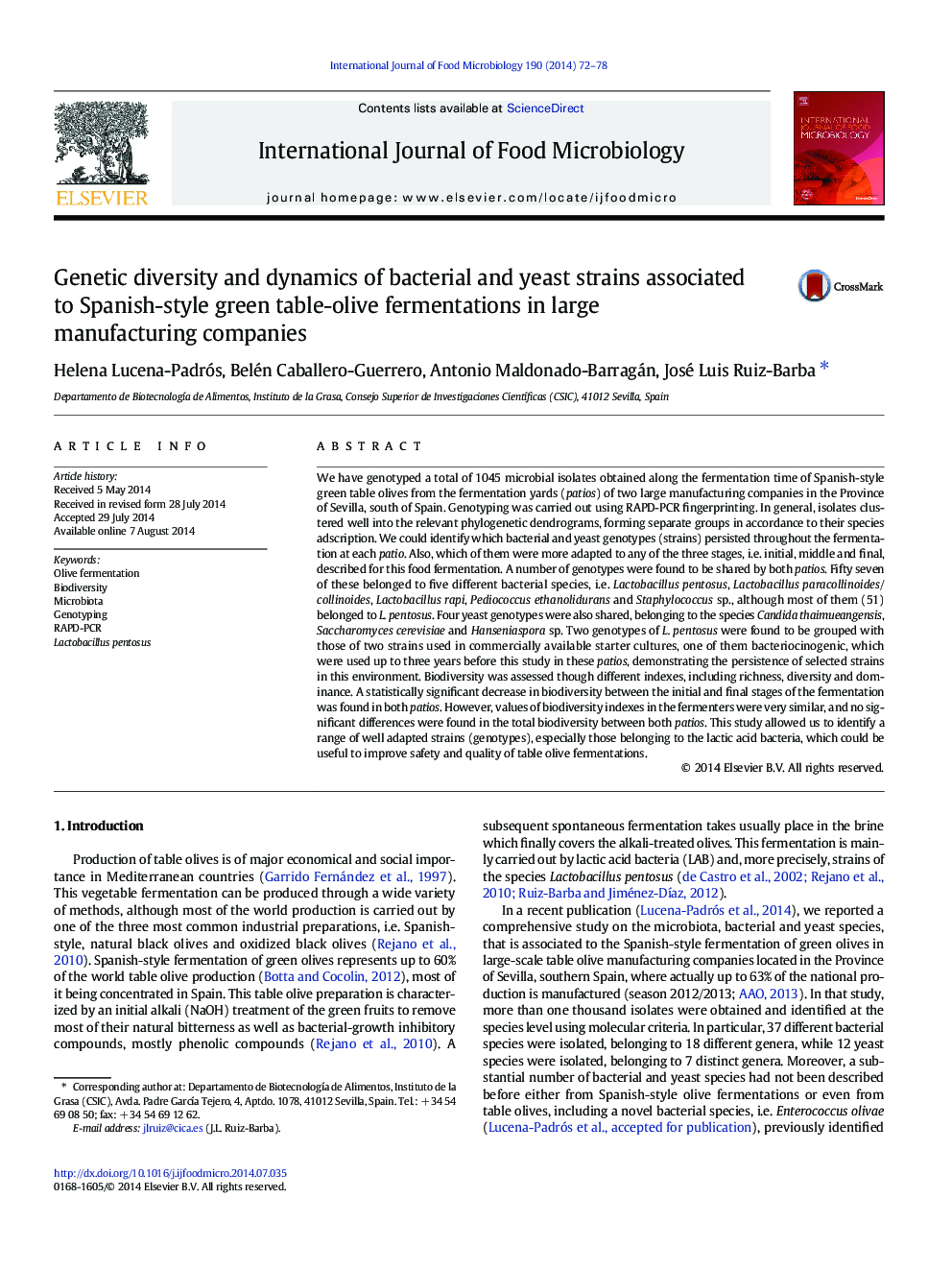| کد مقاله | کد نشریه | سال انتشار | مقاله انگلیسی | نسخه تمام متن |
|---|---|---|---|---|
| 4366809 | 1616593 | 2014 | 7 صفحه PDF | دانلود رایگان |
• We have genotyped 1045 microbial isolates from Spanish-style olive fermentations.
• Isolates clustered well into phylogenetic dendrograms in accordance to their species.
• Fifty seven bacterial genotypes were shared by the two fermentation yards studied.
• Four yeast genotypes were shared by the two fermentation yards studied.
• Two L. pentosus genotypes persisted for years after use of commercial starter cultures.
We have genotyped a total of 1045 microbial isolates obtained along the fermentation time of Spanish-style green table olives from the fermentation yards (patios) of two large manufacturing companies in the Province of Sevilla, south of Spain. Genotyping was carried out using RAPD-PCR fingerprinting. In general, isolates clustered well into the relevant phylogenetic dendrograms, forming separate groups in accordance to their species adscription. We could identify which bacterial and yeast genotypes (strains) persisted throughout the fermentation at each patio. Also, which of them were more adapted to any of the three stages, i.e. initial, middle and final, described for this food fermentation. A number of genotypes were found to be shared by both patios. Fifty seven of these belonged to five different bacterial species, i.e. Lactobacillus pentosus, Lactobacillus paracollinoides/collinoides, Lactobacillus rapi, Pediococcus ethanolidurans and Staphylococcus sp., although most of them (51) belonged to L. pentosus. Four yeast genotypes were also shared, belonging to the species Candida thaimueangensis, Saccharomyces cerevisiae and Hanseniaspora sp. Two genotypes of L. pentosus were found to be grouped with those of two strains used in commercially available starter cultures, one of them bacteriocinogenic, which were used up to three years before this study in these patios, demonstrating the persistence of selected strains in this environment. Biodiversity was assessed though different indexes, including richness, diversity and dominance. A statistically significant decrease in biodiversity between the initial and final stages of the fermentation was found in both patios. However, values of biodiversity indexes in the fermenters were very similar, and no significant differences were found in the total biodiversity between both patios. This study allowed us to identify a range of well adapted strains (genotypes), especially those belonging to the lactic acid bacteria, which could be useful to improve safety and quality of table olive fermentations.
Journal: International Journal of Food Microbiology - Volume 190, 3 November 2014, Pages 72–78
